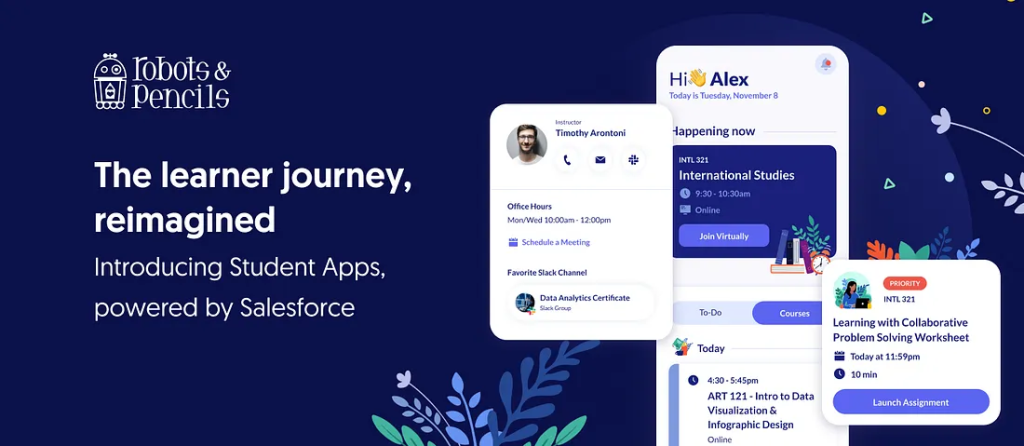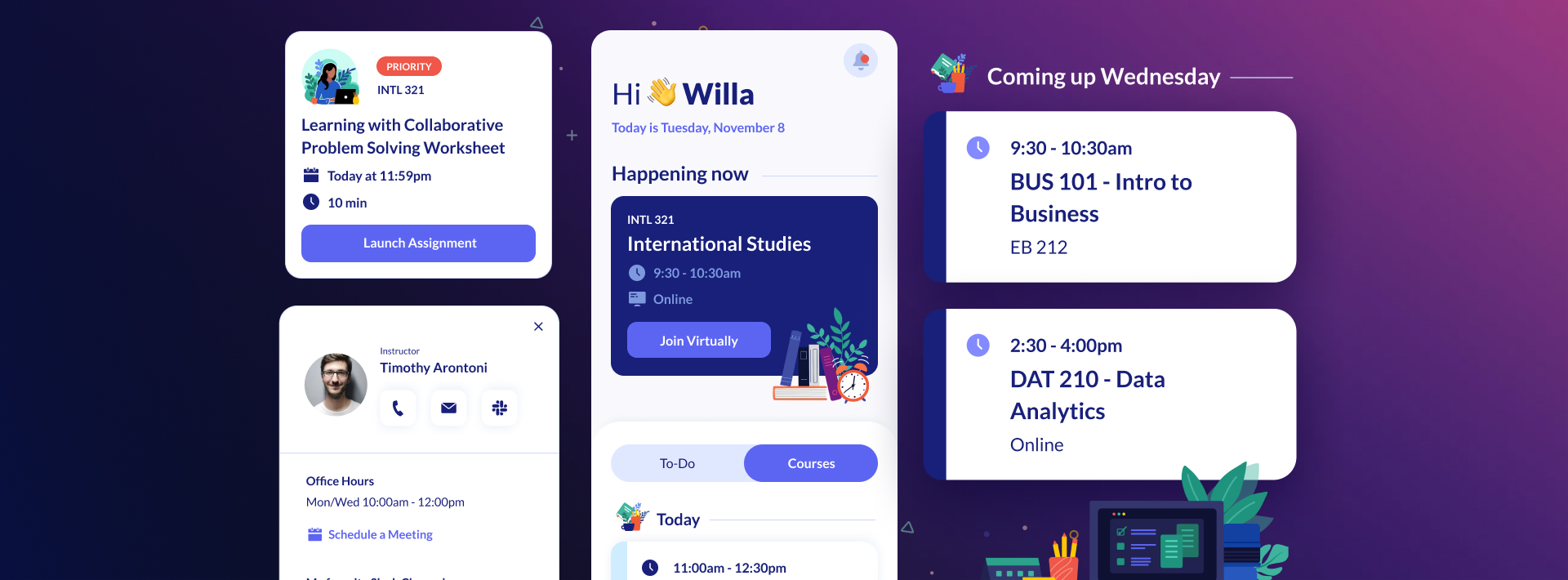
Led by newly appointed Head of Product Ryan Gialames, the student-centric mobile, web, and Slack apps powered by Salesforce focus on powering the learner journey and providing students with full wrap-around support
CLEVELAND, October 25, 2022 — Today, Robots & Pencils, a digital product company focused on transforming businesses with mobile, web, and frontier technologies, announced the release of its new education product, Student Apps. Concurrently, the company has appointed Ryan Gialames as Head of Product, Edtech, to lead and execute the ongoing strategy and design of Student Apps.
Student Apps provides students with a seamless, customized experience that supports each learner’s unique journey. Powered by Salesforce, Student Apps integrates backend systems, including student information systems and learning management system platforms, under a user-centered front end. This multi-app platform is a breakthrough in the educational technology field as its unique method of consolidating all student data eliminates the data silos that normally impede the ability of staff to support students.
“Student Apps is designed to meet the needs for institutions focused on providing full support to learners who would like to optimize their existing technological investments, unlock the power of Salesforce and Slack for education, build a journey unique to each learner through automation, connect learners to their community, and deliver innovative programs,” said Tracey Zimmerman, President and CEO of Robots & Pencils. “Our goal is to break current barriers and create new and innovative solutions that meet the needs of our clients in the current digital landscape.”
Student Apps has already had a successful trial run with Arizona State University. In 2019, ASU and Robots & Pencils partnered to find a way to streamline ASU’s technology in order to better communicate with students. Robots & Pencils created a Slack bot, now available as part of the Student Apps suite, that helps with the onboarding process and cuts down the amount of manual labor required to get students enrolled and engaged with the institution, driving better student outcomes.
“Universities often “ship the org chart”, with each department vying for the learner’s time and attention. Combine this with a landscape of disparate edtech technologies and the student experience suffers. Student Apps solve this problem, providing a set of tools to help learners manage the important tasks and milestones that will support their success and connecting them to those who can help, including staff and peers. ” said Gialames. “I’m thrilled to have the opportunity to work with a forward-thinking company like Robots & Pencils to help universities and professional learning providers solve pressing matters and build the optimal learner experience.”
Effective immediately, Gialames has stepped into the role of Head of Product for the company’s education technology. In this role, he will be responsible for launching edtech products, such as Student Apps, and bringing them to market while also driving the future innovation of these products. Most recently Gialames served as the Sr. Director, UX/UI at Western Governors University. Previously, he served as the Director in Product Design at Robots and Pencils where he led product strategy and design across all education clients including Arizona State University, University of Texas, Texas Oncourse, and Trilogy Education which was acquired by 2U. Prior to joining Robots & Pencils, Gialames was the Senior Director of Product Strategy and UX at the Carnegie Mellon University backed edtech startup, Acatar, and was Manager of Online Student Experience at Education Management Corporation.
Student Apps is now available in the Salesforce Appexchange. The platform has an annual license fee and implementation service fees, and can be configured to suit the needs of the institution.
This rollout follows additional growth across industries for Robots & Pencils, who announced an investment from Salesforce Ventures and the company’s partnership with LunaYou, a women-centered maternal wellbeing program created to address the maternity crisis earlier this year.
To learn more about Robots & Pencils, please visit www.robotsandpencils.com










